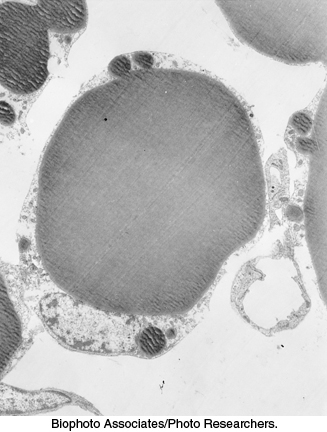Fatty Acid Metabolism
CHAPTER
22
643

OUTLINE
We turn now from the metabolism of carbohydrates to that of fatty acids. A fatty acid contains a long hydrocarbon chain and a terminal carboxylate group. Fatty acids have four major physiological roles. First, fatty acids are fuel molecules. They are stored as triacylglycerols (also called neutral fats or triglycerides), which are uncharged esters of fatty acids with glycerol. Triacylglycerols are stored in adipose tissue, composed of cells called adipocytes (Figure 22.1). Fatty acids mobilized from triacylglycerols are oxidized to meet the energy needs of a cell or organism. During rest or moderate exercise, such as walking, fatty acids are our primary source of energy. Second, fatty acids are building blocks of phospholipids and glycolipids. These amphipathic molecules are important components of biological membranes, as discussed in Chapter 12. Third, many proteins are modified by the covalent attachment of fatty acids, which targets the proteins to membrane locations (Section 12.4). Fourth, fatty acid derivatives serve as hormones and intracellular messengers. In this chapter, we focus on the degradation and synthesis of fatty acids.


644
Fatty acid degradation and synthesis mirror each other in their chemical reactions
Fatty acid degradation and synthesis consist of four steps that are the reverse of each other in their basic chemistry. Degradation is an oxidative process that converts a fatty acid into a set of activated acetyl units (acetyl CoA) that can be processed by the citric acid cycle (Figure 22.2). An activated fatty acid is oxidized to introduce a double bond; the double bond is hydrated to introduce a hydroxyl group; the alcohol is oxidized to a ketone; and, finally, the fatty acid is cleaved by coenzyme A to yield acetyl CoA and a fatty acid chain two carbons shorter. If the fatty acid has an even number of carbon atoms and is saturated, the process is simply repeated until the fatty acid is completely converted into acetyl CoA units.

Fatty acid synthesis is essentially the reverse of this process. The process starts with the individual units to be assembled—
645